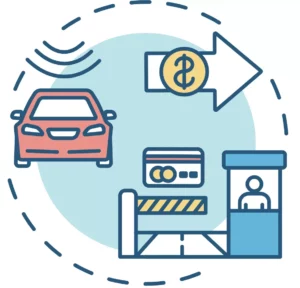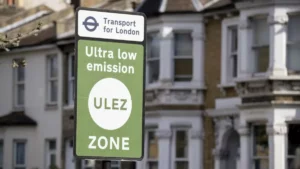Steve Parsons, Sales Director UK & Ireland, Kapsch TrafficCom Ltd writes this opinion piece for Highways News:
With more electronic vehicles on the road than ever, the congestion challenge in London’s capital remains large whilst revenues from fuel tax is inevitably falling. All of this is adding to TfL’s post-pandemic funding shortfall. With rapid action needed, I’d argue that pay-per-mile Road User Charging would provide fair, appropriate and effective solutions to the capital’s pressing congestion and funding challenges.
In a bid to control traffic congestion and minimise associated air pollution, London Mayor Sadiq Khan has announced plans to expand London’s Ultra Low Emissions Zone (ULEZ) during 2023. The new area covered by the scheme will mirror the existing Low Emissions Zone (LEZ), which is currently in force across most of Greater London. The aim is that the expanded ULEZ will help to reduce NOx emissions from vehicles in Greater London by up to 330 tonnes per year and CO2 emissions by up to 150,000 tonnes.
This initiative will clearly have a major impact on the kinds of vehicles used in London. According to Cittimagazine, the number of highly polluting cars on the capital’s roads could be reduced by up to 40,000 per day.
But although this is clearly great for the health of the city, the adoption of Electric Vehicles (EVs), which is gathering pace across the UK, means that fuel consumption – and related fuel duties – are declining. This, in turn, will further reduce funding available for transportation, while doing nothing to reduce the total number of vehicles on the road – and the related congestion challenges.
In the short term, expanding the ULEZ is expected to deliver some modest congestion and air pollution quick wins. However, the Mayor recognises that a more sophisticated, longer-term strategy will eventually be needed – particularly to tackle London’s congestion challenges and to ensure that the capital’s road network continues to be properly funded as EVs replace combustion-powered vehicles.
A key role for road user charging (RUC)
When it comes to solving London’s congestion and funding challenges, road user charging (RUC) is likely to play a key role. This technology looks at both the distance travelled by motorists in their vehicles, as well as the type and emissions status of vehicles – and applies charges based on these criteria. Because of its ‘pay-per-mile’ approach, RUC is much fairer than traditional congestion charging solutions that apply flat-rate charges for all kinds of vehicles, whether they travel for just a few miles in the restricted zone, or drive around all day.
Recognising that RUC provides a potentially fair and effective way to ensure that London can meet its air quality, congestion, and funding goals, the Mayor is launching a number of pilot projects around the capital. Specifically, RUC is being considered for the Blackwall tunnel crossing under the Thames and – if construction plans go ahead – for the Silvertown project in Newham as well.
Paving the way for a London-wide scheme
These proposed RUC ‘stepping stones’ will help to drive the future agenda for a full, Greater-London-wide scheme. The good news for the government is that 42% of Londoners say they would support the introduction of ‘pay-per-mile’ RUC to help TfL make up its funding shortfall, which suggests that public objections to such schemes may be surmountable with the right consultation and processes in place.
However, there are still very real public concerns about RUC in London, which means it’s critical to focus on the new value these kinds of schemes create for local road users. Above all, the technology should make things simple for drivers. They should be able to access the road network easily, for example, with no need to buy additional devices such as RFID or DRSC tags for their vehicles. RUC solutions should also support new, value-added services that help drivers avoid congestion – and save money – by taking alternative routes or transport modes, or by travelling at off-peak times.
My company could help because we provide the back-end systems that power London’s congestion charging, LEZ and ULEZ schemes. What’s more, our broad portfolio of RUC technology solutions and unique tolling and congestion charging expertise provides a clear and uniquely low-risk roadmap to RUC across the capital when the time is right.
Having deployed a nationwide satellite distance-based tolling solution for HGVs in Bulgaria, Kapsch has also field-tested our end-to-end RUC capabilities – with excellent outcomes and KPIs achieved.
Kapsch’s position as the industry leader for RUC solutions is based on:
- Our end-to-end technology portfolio and delivery capabilities
which minimise project risks and deliver industry leading performance KPIs. - Our advanced GNSS capabilities
which are underpinned by our field-proven, proprietary geo-location platform. - Our back-office support for distance-based tolling and charging
which is already in place at TfL to support London congestion charging and the ULEZ.
(Picture – Yay Images)






















